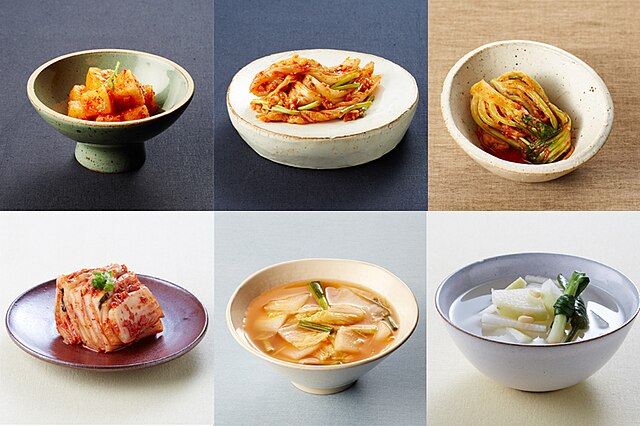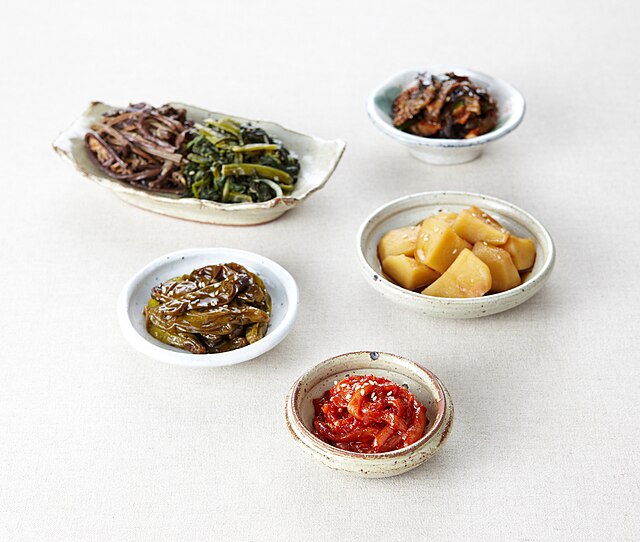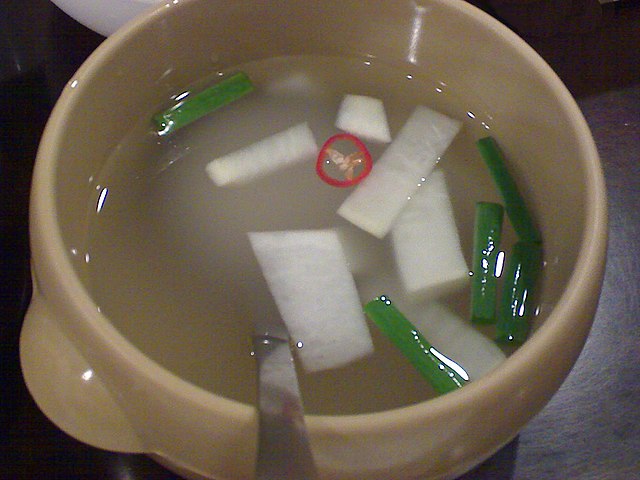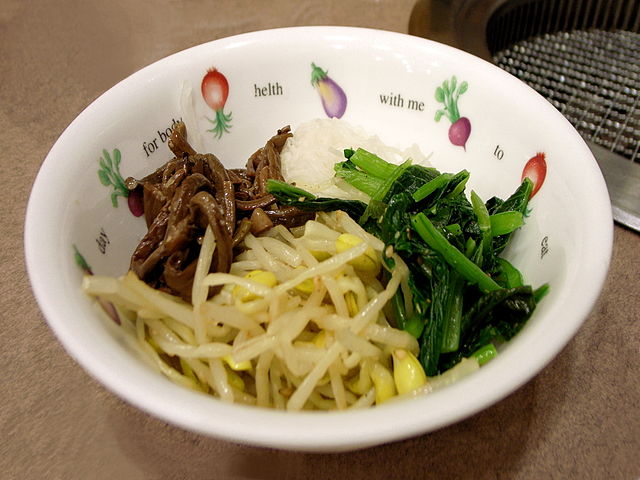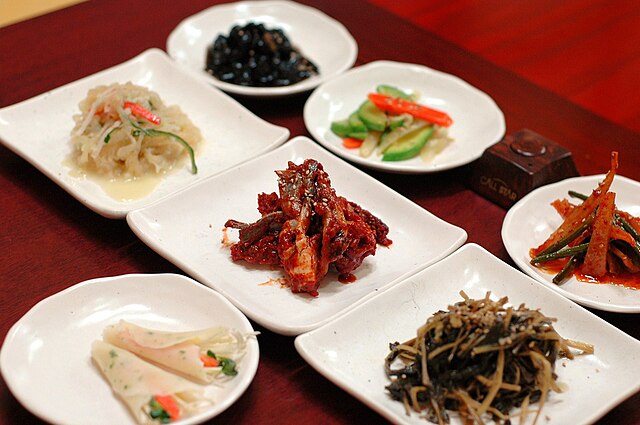Kimchi is a traditional Korean side dish (banchan) consisting of salted and fermented vegetables, most often napa cabbage or Korean radish. A wide selection of seasonings are used, including gochugaru, spring onions, garlic, ginger, and jeotgal. Kimchi is also used in a variety of soups and stews. Kimchi is a staple food in Korean cuisine and is eaten as a side dish with almost every Korean meal.
Clockwise from top-left: Kkakdugi, pa-kimchi, yeolmu-kimchi, dongchimi, nabak-kimchi, mat-kimchi
Proclamation signed by Governor of Maryland Larry Hogan declaring November 22 as 'Kimchi Day' (2022)
Basic ingredients for kimchi: napa cabbage, radish, carrot, salt, garlic, fish sauce, chili powder and scallions. A sticky, glutinous paste of rice flour is also needed to make the seasoning of the kimchi.
Salted napa cabbage before making kimchi. Cabbage is usually marinated twice to help maintain the salt in the dish.
Banchan are small side dishes served along with cooked rice in Korean cuisine. Banchan are set in the middle of the table to be shared. At the center of the table is the secondary main course, such as galbi or bulgogi, and a shared pot of jjigae. Bowls of cooked rice and guk (soup) are set individually. Banchan are served in small portions, meant to be finished at each meal and replenished during the meal if not enough. Usually, the more formal the meals are, the more banchan there will be. Jeolla province is particularly famous for serving many different varieties of banchan in a single meal.
Banchan
Dongchimi (동치미)
Various namul
Various banchan served at a table

